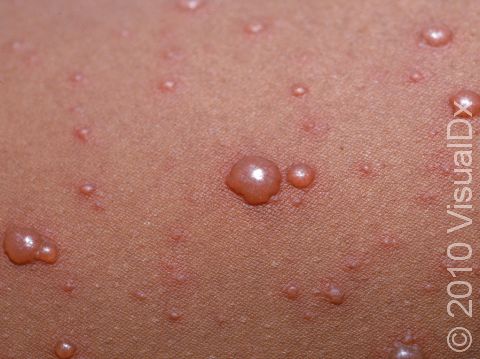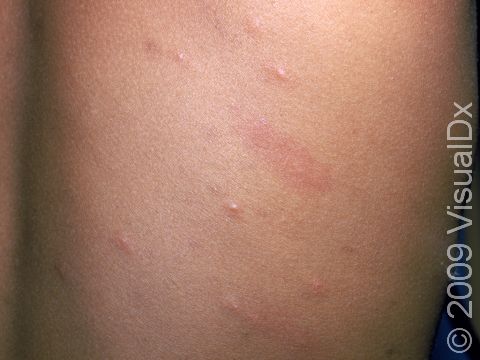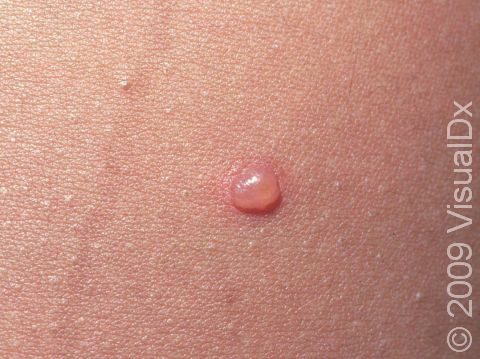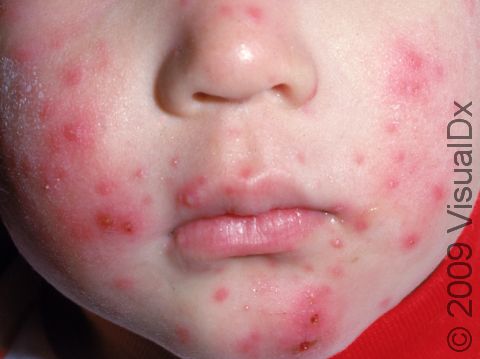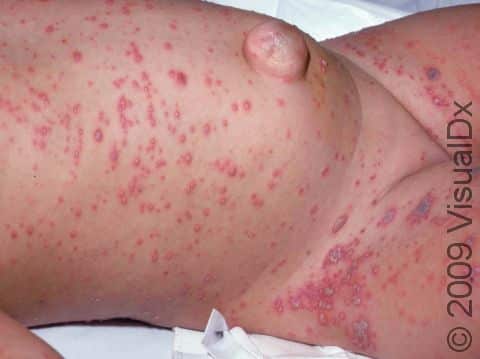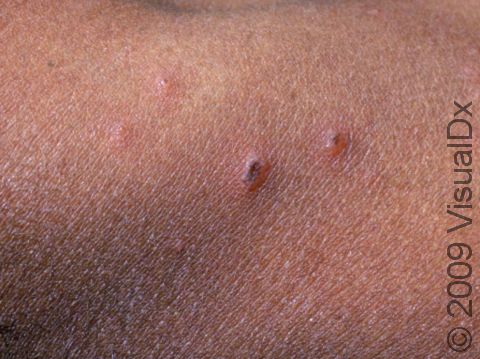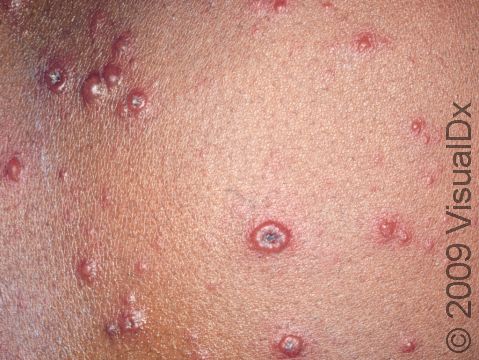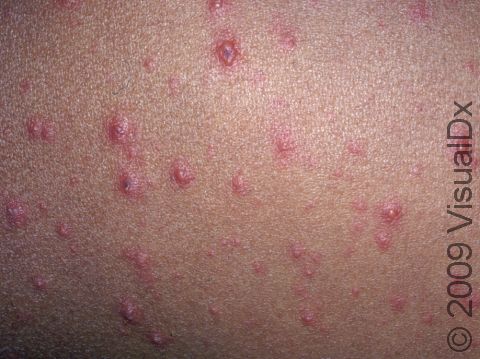Chickenpox (Varicella)
Varicella, commonly known as chickenpox, is an infection caused by the varicella-zoster virus. It can be extremely serious in infants. Infants who are infected are either infected because their birth mother was infected during pregnancy (fetal or congenital varicella) or they acquired the virus after they were born (postnatal varicella). Fetal varicella and congenital varicella are much more serious forms of this disease, and there is a high risk of malformations and death to the newborn. Postnatal varicella is less severe, and infants typically only have the classic chickenpox rash. The rash usually first appears on the scalp, face, or chest and tends to be more prominent in the center of the body.
People with chickenpox are contagious from 24-48 hours prior to the appearance of the rash and continue to be contagious up until a week after the onset of the rash. This disease is spread by respiratory secretions, such as from mucus or saliva, so it is especially important to keep unimmunized children and infants away from people who have chickenpox.
Who's At Risk?
Chickenpox is not as common as it once was due to the varicella vaccine. However, some children who are immunized may still get chickenpox, but usually it is a milder illness. Chickenpox is most common in children younger than 10 years. Chickenpox is rare in infants because they are usually protected by their birth mother’s immune system (unless their mother was never infected or vaccinated).
Signs & Symptoms
Most children develop fever, lethargy, and other symptoms (eg, loss of appetite, headache, stomachache) for 1-3 days followed by a rash. These symptoms last for 2-4 days after the rash appears.
The rash is itchy and initially starts as pink-to-red macules (small, flat areas of skin) that quickly turn into papules (small, solid bumps) and then vesicles (fluid-filled blisters) with a surrounding halo of redness. In darker skin colors, the redness may be harder to see, or it may appear more purple. The rash usually appears first on the trunk or scalp. Linings of body cavities, such as inside the mouth or nose (mucous membranes), palms, and soles can have a few lesions. The average child develops a few hundred blisters, most of which heal without leaving scars. A child who has had the chickenpox vaccine will typically have far fewer lesions and other less severe symptoms.
The vesicles are usually described as looking like “a dewdrop on a rose petal” and are easily broken. Blisters become cloudy and then crust over, with healing completed within 1-3 weeks. Lesions often occur in 3 or more successive crops. Lesions in different stages of development may occur at the same time.
Self-Care Guidelines
Chickenpox resolves on its own after 1-3 weeks, but it is most important to keep the baby comfortable and to discourage scratching, which can cause infection and scars.
For itch:
- Give the baby oatmeal baths in lukewarm water.
- Keep the baby’s fingernails short to help minimize skin breaks with scratching.
- Apply calamine lotion on the areas of rash.
- DO NOT USE lotions containing antihistamines or lidocaine, as they are no more effective than the previous measures and might cause allergic reactions.
For pain and fever:
- You can give the baby acetaminophen (eg, Infants’ Tylenol).
Because chickenpox is highly contagious, keep the baby at home until symptoms are gone and all blisters have crusted. Anyone with chickenpox should avoid pregnant people who have never had chickenpox, newborns, and people who have a weak immune system or eczema. Once all the blisters have dried up into scabs, the baby is no longer considered contagious to others.
Treatments
Antiviral medication may be given if the baby with chickenpox is seen early (during the first day of the rash) or for those at higher risk for more severe disease (those with asthma, eczema, recent sunburn, those taking aspirin or corticosteroids on a regular basis, and those with a weak immune system).
Visit Urgency
Call their medical professional if your baby develops fever and a rash.
References
Bolognia J, Schaffer JV, Cerroni L. Dermatology. 4th ed. Philadelphia, PA: Elsevier; 2018.
James WD, Elston D, Treat JR, Rosenbach MA. Andrew’s Diseases of the Skin. 13th ed. Philadelphia, PA: Elsevier; 2019.
Kang S, Amagai M, Bruckner AL, et al. Fitzpatrick’s Dermatology. 9th ed. New York, NY: McGraw-Hill Education; 2019.
Paller A, Mancini A. Paller and Mancini: Hurwitz Clinical Pediatric Dermatology. 6th ed. St. Louis, MO: Elsevier; 2022.
Last modified on June 18th, 2024 at 4:14 pm

Not sure what to look for?
Try our new Rash and Skin Condition Finder
